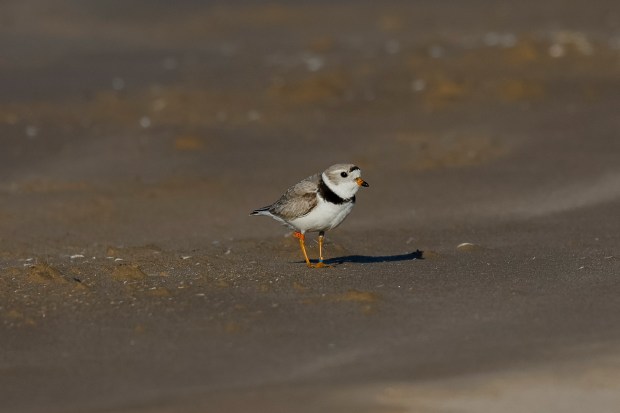There’s a new piping plover at Montrose Beach, and she has the beak coloration of a female, according to Chicago Piping Plovers.
The newcomer joins Imani — the city’s most celebrated avian bachelor — who has returned to the North Side beach for three summers, apparently looking for love.
The only known surviving chick of local legends Monty and Rose, Imani has endured a series of very public disappointments in his search for a mate.
But his luck may be changing.
There are currently three male piping plovers at the protected beach at Montrose, including one hatched at Cat Island in Wisconsin, and an unbanded bird that arrived Tuesday. But the apparent female has been spending time with the hometown hero, according to Tamima Itani, lead volunteer coordinator for the Chicago Piping Plovers.
“Early reports are that she’s hanging out with Imani,” Itani said.
The stakes are high — and not just because of romantic intrigue.
The Great Lakes population of piping plovers, which once included about 650 nesting pairs, is endangered, with just 80 nesting pairs recorded in 2023, according to the Great Lakes Piping Plover Conservation Team.
When Imani’s parents, Monty and Rose, set up housekeeping at Montrose Beach in 2019, the city rooted for the imperiled lovebirds and their fluffy hatchlings.
Piping plovers in Chicago: How the ‘love story’ between Monty and Rose unfolded at Montrose Beach
The latest piping plover to arrive at Montrose has her own dramatic backstory. She has been identified as Searocket, one of three captive-reared chicks released at Montrose last summer.
Before Searocket left last summer to winter in a warmer climate, she had gotten her foot tangled in a fishing line, a dangerous development. The team of volunteer piping plover monitors that watches the birds every summer attempted to capture her and remove the line, but they were unsuccessful.
Searocket began her migration the next day.
“It’s really remarkable that she was able to get rid of the fishing line,” Itani said.
Searocket is thought to be female because of a “smudged” border between the orange and black portions of her beak. In males, the border is more of a clear line.
The next step for the plucky shorebirds is unclear, but fans are excited.
“If it’s confirmed that she’s a female, we could possibly end up having a nest, which would be thrilling,” said Itani.
She asked that Chicagoans do their part by staying out of the fenced-off protected beach, which is marked with signs.
“The danger is that piping plovers will not nest in an area that they feel is disturbed,” she said.
nschoenberg@chicagotribune.com




